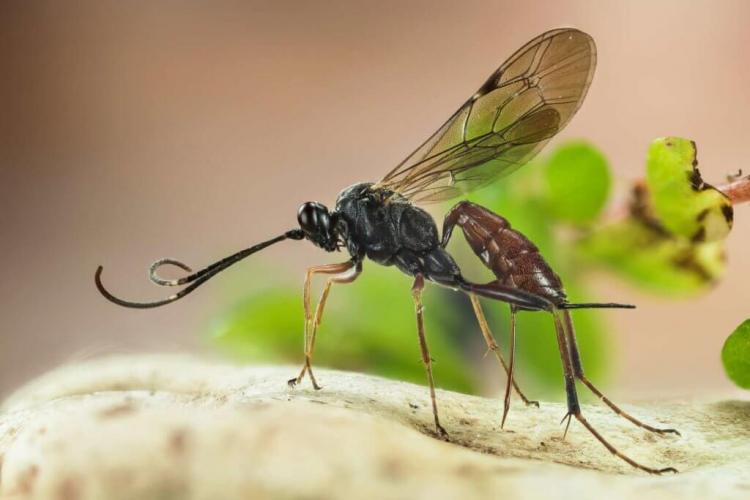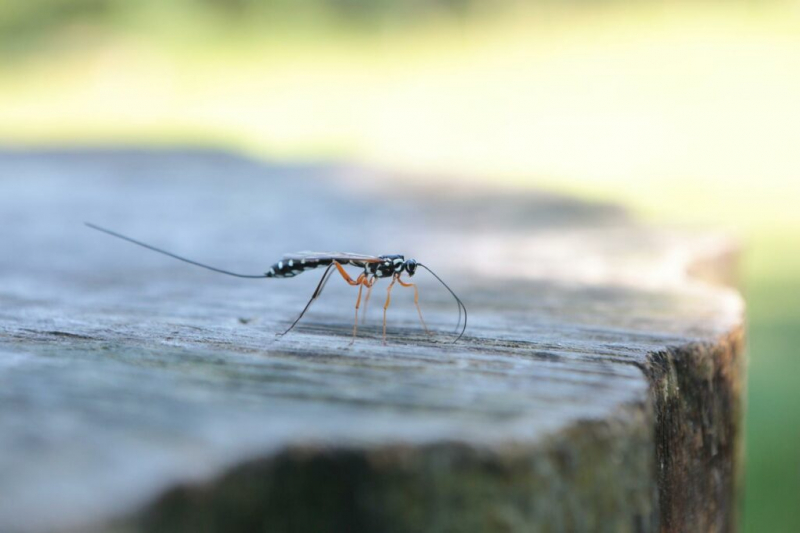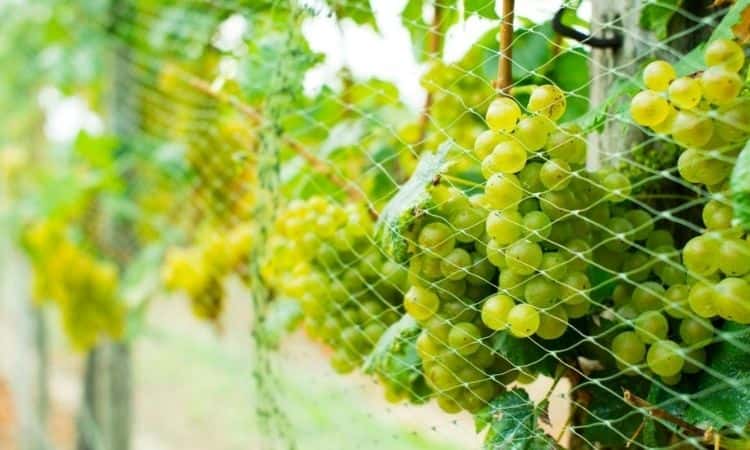Woodworms: Recognize, Prevent And Get Rid
With these tips, you will surely get rid of the woodworm. Everything about the wood pest and how to control it with the right means can be found here.
There’s the worm in there! We cannot say with certainty whether the phrase really refers to the woodworm, but we have all kinds of useful tips about the wood pest. The woodworm, which is actually a beetle larva, is particularly comfortable in damp wood. There the pest can survive in the wood for many years and eat its way deeper and deeper through its favorite food.
So that it doesn’t even get that far, a few important points must be observed, which we will summarize for you further down in the article. If it is already too late and the worm is already in the wood, we have two very effective means for you to get rid of the woodworm for good. When fighting the woodworm, however, you must always bear in mind that the wooden object must also be able to withstand the corresponding agents. If the furniture or wooden instruments are of very high quality, the advice of a professional should always be sought.
Woodworm characteristics
Table of Contents
The woodworm is actually the larva of the common or common rodent beetle ( Anobium punctatum ). The adult beetle becomes 2.5 to 5 millimeters long and is slightly hairy. But it is much more noticeable than his head is completely hidden by his pronotum. Because the common rodent beetle can fly, it can also spread relatively well. The wood in which the adult rodent beetle has already lived as a larva is most likely to attack. Incidentally, the beetles do not cause any damage to the wood, they are only looking for a copulatory partner to be able to lay eggs in a favorable place.
The woodworms hatch a little later from the 0.5 mm eggs, which then represent the real problem. The larvae, which are reminiscent of grubs, work their way quickly into the wood and develop during their time in the wood through several larval stages up to the adult beetle. Depending on how good the conditions for the woodworm are, complete development can only take a year or even up to eight years.
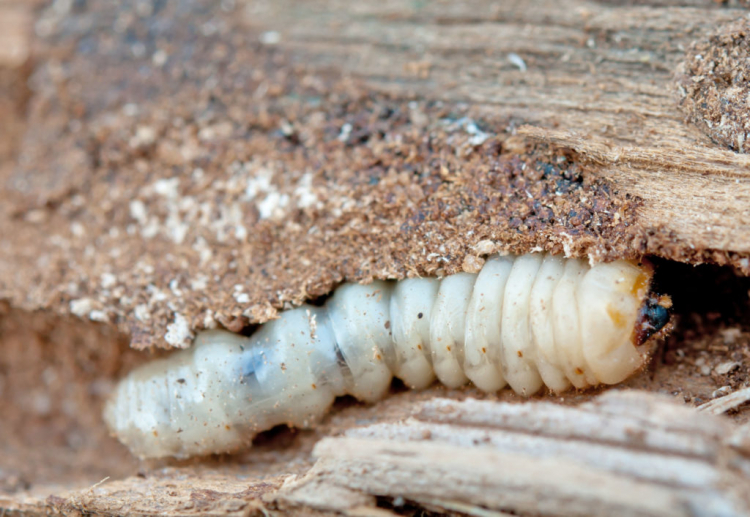
However, the woodworm does not just blindly drill its way into the wood and eat any part of it. Woodworms are real gourmets: although they also attack hardwood, a woodworm usually only bores its way through softwood regions, almost without exception. Because of this, the heartwood is often spared, whereas the softer sapwood is more likely to be eaten away. In addition, the woodworm differentiates between earlywood and latewood. As you can see in the picture below, early and latewood are nothing more than the annual rings of a tree. The light earlywood is formed in spring and due to the rapid growth at this time of the year, the earlywood is generally softer than the latewood. For this very reason, the woodworm also prefers earlywood, which is easier to chew.
Recognize woodworm infestation
The woodworm is one of the dry wood pests and therefore infects all types of built-up wood. On the other hand, he completely avoids fresh wood. Almost every wood can be attacked by the wood pest, which is why roof trusses, wooden windows, furniture of all kinds, and other objects made of wood represent potential food for the unpleasant worm. An infestation can also be quickly identified, provided that potentially endangered wooden objects are regularly searched for small holes.
The holes of a woodworm always have a diameter of 1 to 2 mm and, depending on the severity of the infestation, they only appear sporadically. But it is also possible that the little beasts completely perforate a wooden object in the truest sense of the word. These holes are then a really sure sign of wood damage caused by the woodworm. At this moment, however, it is not yet clear whether a woodworm is also up to mischief in the wooden hole or whether the hole has already been abandoned.
First of all, the ground directly under the hole should be searched for wood dust, as this is regularly carried out of the wood cave by a woodworm. If wood flour is found, you should place a sheet of paper directly under the hole. Now wait a few days and check the leaf for wood flour that has been thrown out again (little tip: the wood flour is best seen on black paper). You have to wait a few days, however, as a woodworm does not eat continuously and therefore does not throw out wood flour every day. If the paper test is positive, you know that your wooden object is infected with woodworms. Wood pests (such as woodworms) should always be fought, because pieces of furniture can even be destroyed to such an extent that, for example, a chair leg is no longer stable and breaks off.
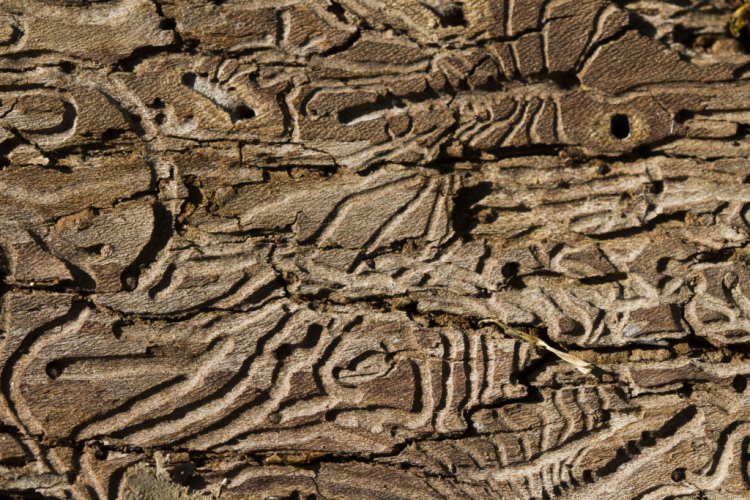
In addition to the paper test, you should also be able to perceive the woodworm through its chewing noises. In absolute silence, you can supposedly hear the insects working their way through the wood with their chewing tools. However, we cannot confirm whether this is true.
Prevent woodworms
There are various ways and means to ensure that the wood-damaging worm does not even get into your beloved furniture and wooden structures. Some of them are very easy to implement – others are very expensive.
The best way to protect wooden furniture and objects is by heating. Because the woodworm can only survive in wood with a residual moisture of over 10%. In a continuously heated room, the wood is usually so dry that the woodworm cannot attack even untreated wood. On the other hand, wood in cool places such as cellars, attics, churches, vacant buildings, and sheds is susceptible.
You might so like: Propagating Fuchsias: Cuttings And Sowing
We can therefore summarize that all wooden objects outdoors and that are stored in a cool place can also be attacked by woodworm.
To ensure that the wood is still protected under these adverse conditions, a few basic rules should be followed:
- Wood should never lie directly on the ground outdoors
- Protect wood from moisture with a waterproof varnish
- Special preparations against woodworm infestation also have a preventive effect (“woodworm death”)
It is not always necessary to buy expensive and often poisonous glazes, especially against woodworms. A glaze is often enough to protect the wood from moisture penetration. Chemical preparations can only be used in persistent problem cases. Glazes are sold under the names “Holzwurmtod” and “Holzwurm-Ex”, which protect the wood preventively and prevent woodworm infestation. The funds are, however, very questionable for the environment in almost every respect.
Fight woodworms
In principle, the woodworm can be combated pretty well. The wooden object to be treated is often the problem. A stationary roof beam, for example, is much worse to treat than a chair leg or other small, movable piece of furniture. There are countless remedies on the Internet, especially from the home remedy area, which are said to be good for combating woodworms.
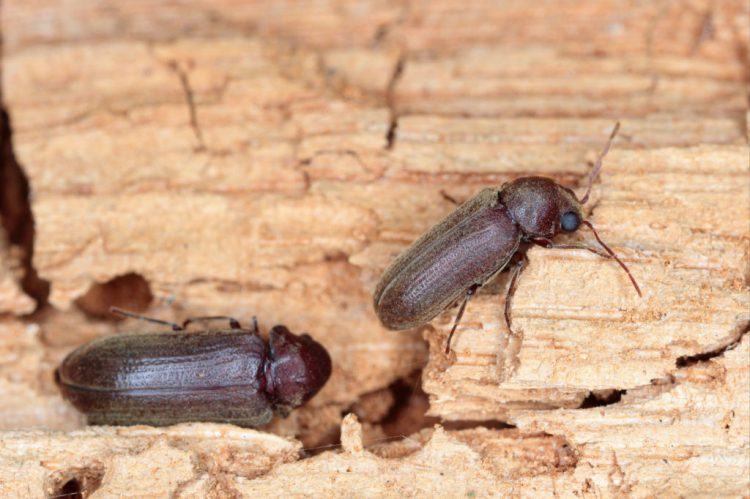
Home remedies such as ammonia, alcohol, and kerosene kill the woodworm, but the odor nuisance is sometimes considerable and residues are almost always left in the wood. As a result, the treated piece of furniture can still smell unpleasant for a long time after the treatment. We are therefore introducing you to two methods that work well and are as gentle as possible on the wood.
Fight woodworms with the heat method
Even professional furniture restorers swear by this control method. First, you have to know that the woodworm dies at 55 ° C. This temperature is generally harmless for wood, paints, and the like. To combat the woodworm using the heating method, the infected piece of wood must be mobile. Very small wooden furniture can be treated in the oven at 55 ° C for 3 hours.
This will kill all larvae in the wood. Larger objects can theoretically be treated in a sauna, but who has that? In summer you can use the strong solar radiation to reach the temperatures required to fight the woodworms. On a sunny and warm (preferably hot) day, you can place the item in the sun as airtight as possible under a black sheet. Below that, it can quickly get over 50 ° C, which is why the temperature profile should be monitored with a thermometer.
You might so like: Bottlebrush Plant: Everything For Planting And Caring For Callistemon
Here, too, 3 hours at 55 ° C are sufficient to kill the woodworms. Only when the wood is more than 6 cm thick does the treatment have to be extended. If there is not enough sun, the item can also be stowed in the car or the greenhouse. There it will definitely be warm enough in the blazing sun! The woodworm can be combated very gently and effectively with this method.
Fight woodworms with the alcohol method
Only pure isopropanol alcohol should be used for this control method. This alcohol is characterized by the fact that it evaporates completely without leaving any residue and is also very cheap at around 5 euros per liter. This method is more suitable for small wooden objects, as too much isopropanol evaporates at one time with larger wooden objects. This can result in a highly explosive mixture of isopropanol and air, which would immediately explode from an ignition source.
For this reason, isopropanol should generally only be used in well-ventilated rooms! If, on the other hand, the work is carried out outdoors, there are no problems with the evaporated isopropanol. The wood to be treated will survive the alcohol treatment undamaged, but certain varnishes and wood treatments can be attacked by alcohol. Therefore, find out beforehand whether your treated wood surface can tolerate isopropanol or test it out on a small area.

Once all of this has been resolved, work can begin: Brush the wooden object thoroughly with the alcohol. You should apply as much isopropanol as possible, especially in the area of the wooden holes. When applying, proceed as quickly as possible so that as little alcohol evaporates as possible. After the application, the wooden object is thoroughly wrapped in painter’s foil so that the isopropanol can soak into the wood and not evaporate. After an exposure time of three days, all woodworms are also fought here. If the wood is thicker than 3 cm, the alcohol may no longer be able to penetrate the core of the wood and the treatment may not fight every woodworm. For thin woods, however, it is often a very good method to completely combat the woodworm.
The following products have proven themselves with us:
- Isopropanol: Particularly suitable for combating woodworms on smaller pieces or surfaces of wood. Use only in well-ventilated rooms.
- Woodworm death: water-based biocidal product for targeted insect control. Effective quickly and permanently, at the same time compatible with wood care products.
- Woodworm spray: single active ingredient preparation as a ready-to-spray water-based solution. Reliably combats woodworms, roebucks, their larvae, and wood-damaging insects and prevents renewed infestation.
Woodworm infestation on load-bearing wooden objects
It gets less fun when important wooden elements are eaten away by the woodworm. A massive infestation by the woodworm can seriously damage load-bearing wooden components. Often this only happens if the roof is leaky and water can penetrate the wood as a result. You should definitely seek advice from specialists here. Trained pest controllers can correctly assess the severity of the infestation and have special control methods to get rid of the woodworm.
As a rule, a thick roof beam cannot be treated satisfactorily with the two control methods presented above. The professionals can, for example, feed gas into the roof beam so that the woodworms can be combated quickly. However, such agents are not without danger to use and therefore they should only be used by specialists to combat the woodworm.

